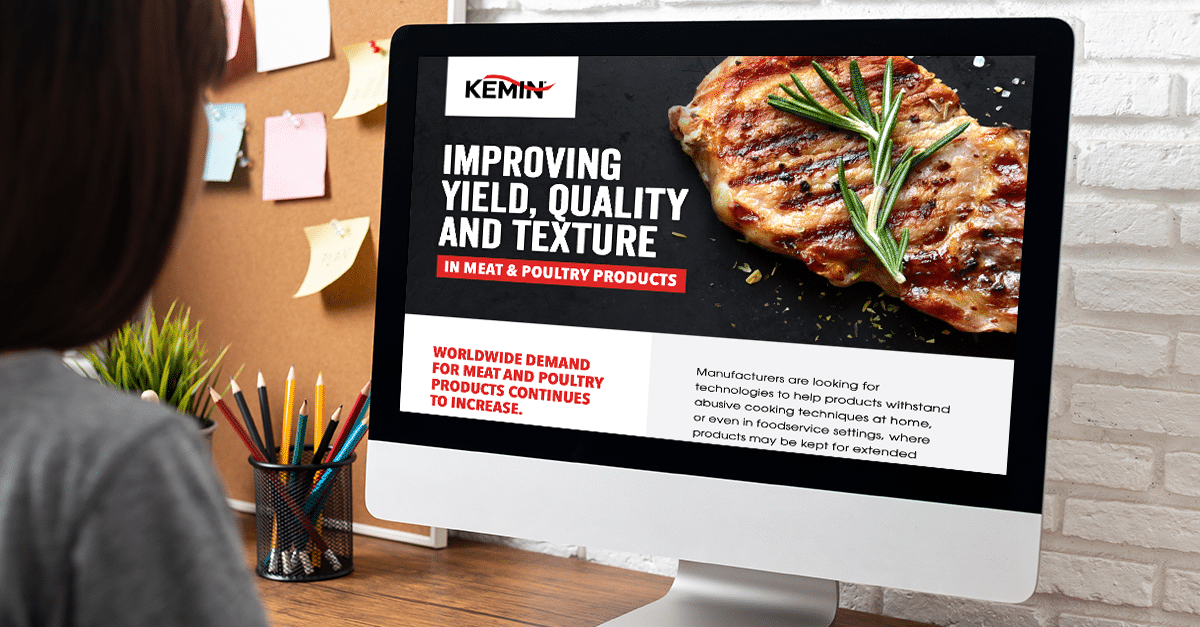A case study is a great way to tell the story of an instance where a product, service or strategy solved a challenge and made a positive impact for a client. It should include measurable outcomes related to your KPIs (key performance indicators), such as sales and return on investment (ROI and ROA). Sharing these outcomes is a great way to demonstrate how your product or service can solve your customers’ challenges by giving real-world examples.
You may think that creating an effective case study means naming a specific customer as an example—which can be difficult if you want to get permission from the customer to use the company and/or product name. But this doesn’t have to be the case. We can almost always position a case study and successfully portray the issue a product/service addresses without naming the customer. For example, we can showcase a prototype that solves a common challenge, such as sugar or calorie reduction, improving texture or taste, etc.
Case studies are especially effective in the consideration stage of the buyer’s journey when customers are comparing solutions and providers to solve a problem they’re experiencing. They make great content across a variety of settings, including:
- Gated content on your website
- Posted to social media
- Shared at trade shows
- Distributed via paid or earned media
- Used as a tool by your sales team
A good case study is an invaluable tool to prove the quality and effectiveness of your product or service by demonstrating a real-life example of a successful outcome.
Case Study Format
There’s a variety of ways to format a case study. It will depend on the topic, how much or how little background you need to give on the product(s) and customer, and the type and amount of outcomes you share.
The order may vary, but your case study should:
- Introduce the product, service or prototype and relevant information on the company using it
- Identify the consumer need or trend being met (include consumer stats if possible)
- Examine the challenge your product will solve
- Demonstrate how the challenge was solved by highlighting products, expertise, processes, etc.
- Present final results (when possible, include potential label claims, key ingredients used, a nutrition facts panel or a before-and-after nutrition panel)
Switch it Up with Unique Case Studies
The above formula can be applied to almost any product or service and used to target multiple audiences. But, there is more than one way to present a case study.
For an eye-catching, out-of-the-box option, consider a video case study featuring experts in your field and/or showcasing your solution. Or opt for an animated execution that utilizes graphics to showcase your processes and results.
Another unique option is an infographic case study. This format holds less content than a report or a video, but can effectively highlight measurable outcomes from your case study. Infographics containing impressive statistics are a way to quickly and easily portray the end results your product or service can bring to a customer.
These creative case study formats are especially useful when you’re looking to stand out, such as at a trade show or pitching to a new business prospect.
Are you looking to create impressive case studies to showcase your products or services? The experienced team at ColinKurtis Advertising can help you create effective marketing content that performs in the ingredient, food, beverage, health and nutrition industries.
To learn more, reach out to Mitch Robinson at Mitch@colinkurtis.com or call 815-965-6657 EXT. 1 and check out examples of our work here.
Blog post from:
Debra Tucker
Vice President, Creative Director


Leave A Comment